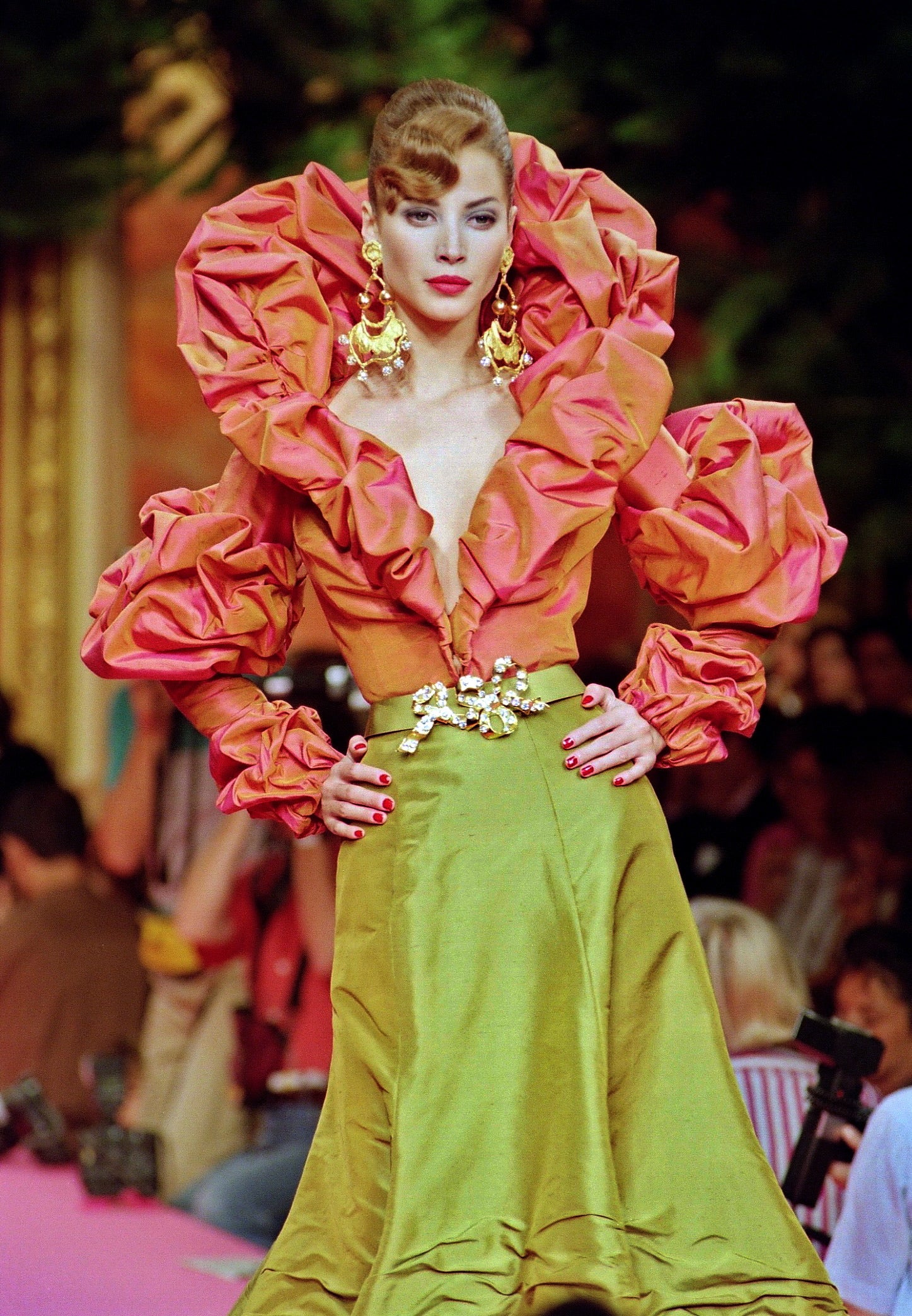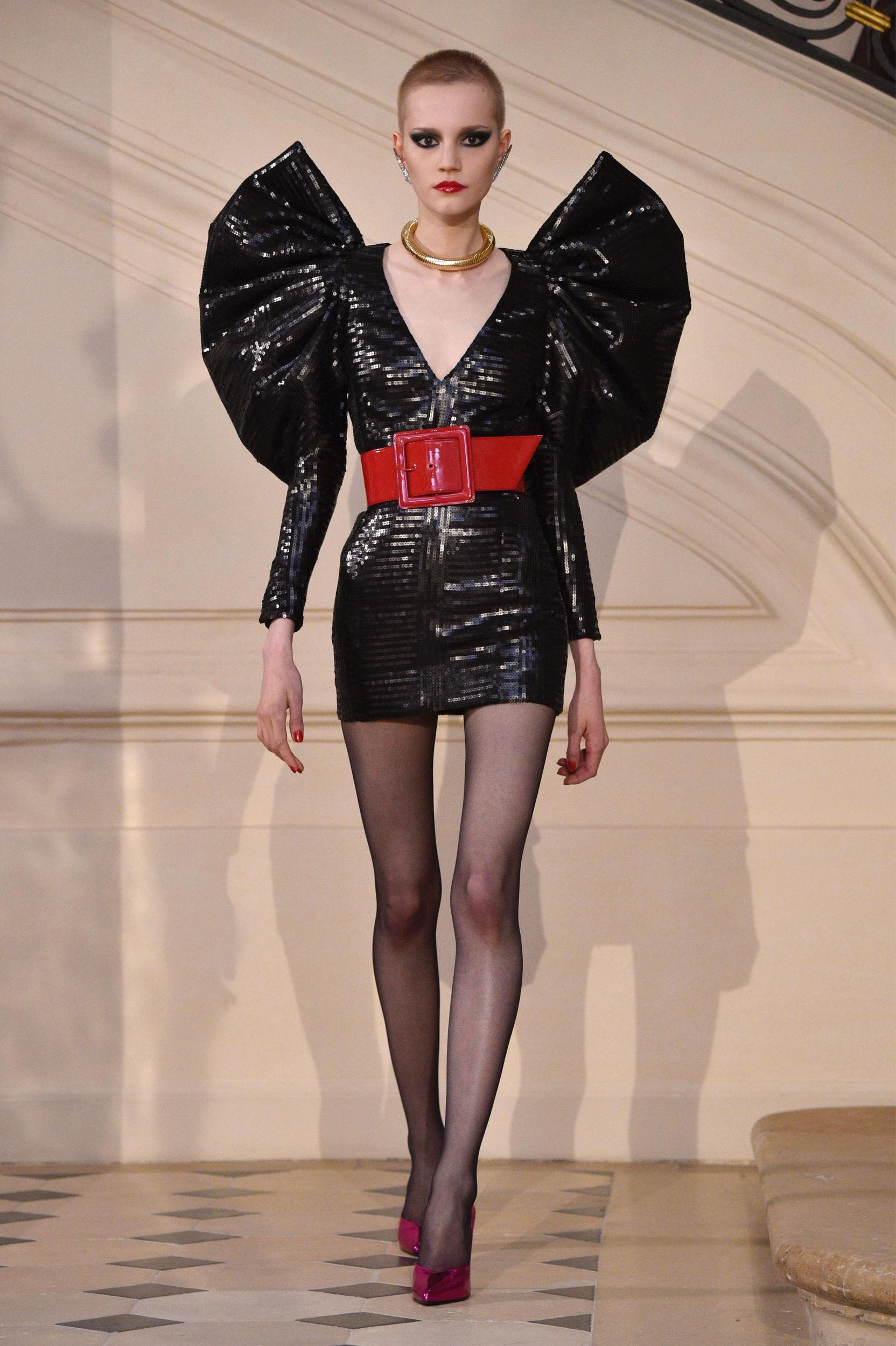Top Trumps: Is fashion following in the high-heeled footsteps of eighties fashion victims?
Can we equate fashion’s current fixation with lavish late-eighties styles with the seemingly unstoppable rise of Donald Trump? Alexander Fury ponders the politics of the ruffles, frills and flounces in the autumn/winter 2016 shows.

Your support helps us to tell the story
From reproductive rights to climate change to Big Tech, The Independent is on the ground when the story is developing. Whether it's investigating the financials of Elon Musk's pro-Trump PAC or producing our latest documentary, 'The A Word', which shines a light on the American women fighting for reproductive rights, we know how important it is to parse out the facts from the messaging.
At such a critical moment in US history, we need reporters on the ground. Your donation allows us to keep sending journalists to speak to both sides of the story.
The Independent is trusted by Americans across the entire political spectrum. And unlike many other quality news outlets, we choose not to lock Americans out of our reporting and analysis with paywalls. We believe quality journalism should be available to everyone, paid for by those who can afford it.
Your support makes all the difference.Mention conservative fashion and you think, generally, of the drab. Of high necklines, low hemlines, and endless dull grey suits - maybe worn by John Major. That’s conservative dressing, with a small “c”. However, there’s another interpretation - and it’s one that informed designers exploits at the recent autumn/winter 2016 womenswear shows in Paris. It’s Conservative in terms of the political party, and their (disputable) heyday in the eighties under Margaret Thatcher, mimicked by Ronald and Nancy Reagan in the U.S.
It was an era of bull market and free trade, of the upwardly-mobile and the young urban professional, and the last thing anyone wanted to wear was a grey suit - at least, not a dull one. It may have been ledge-shouldered Giorgio Armani, square-cut for him and for her; a tightly-waisted Thierry Mugler number, peplumed and pencil-skirted like a cartoonish Hollywood starlet; or a bubble-skirted variant by Oscar de la Renta, Bill Blass or Geoffrey Beene, the American designers of choice for the ladies who luncheon-ed. It was during this era that the aforementioned Mr de la Renta, at lunch with the late John Fairchild, then-publisher of Womenswear Daily, at the New York restaurant La Caravelle commented of the “Conservatively” clad crowd that “These people are absolute hell. They look like fashion victims.” Thus an epithet is born.

What I’m getting at here is that our current fashion moment is following in these high-heeled footsteps. Hedi Slimane’s final Saint Laurent show was the most obvious example - obvious in every sense, with its shirred and puffed and tufted fabrics, most prominently lamé, a late-eighties staple. On a glossy bevy of models most remarkable for their emaciation (which, at the end of fashion month, is saying a lot), Slimane showed recreations of the ruffled and darted and gathered evening dresses Tom Wolfe described in Bonfire of the Vanities. Those were clothing his social X-Rays, “to compensate for the concupiscence missing from their juiceless ribs and atrophied backsides.” Quite.
Over in New York, Oscar de la Renta’s successor Peter Copping clothed his fashion victims in billowing ball gowns and recreations of the pouf skirt. Copping cut his teeth working in the couture salons of Christian Lacroix, whose extravagant clothes came to define an entire decade; while at Balmain (which, coincidentally, Oscar de la Renta also designed for a period - all roads lead to Oscar) Olivier Rousteing showed wide shoulders and short skirts and brocades lavished with dripping fringe and flounces.
In short, everyone was dressing like Ivana Trump, then wife of Donald (who else?) who in the late eighties and early nineties epitomised a social sect pilloried by Wolfe, and Bret Easton Ellis in his 1990 novel American Psycho: the nouveau riche. Their clothes, interior decor, art collections and even daily lives were characterised by the extreme, the florid, by an unconscious love of the just-a-little-too-much. They loved big-name Impressionist art, swagger curtains, bibelots and extravagant evening dresses. The Donald and his beauty-queen wife were the most visible proponents, she the queen of the fashion victims.

Which makes me wonder if fashion knows something that we mere mortals haven’t twigged onto - if fashion is backing a winner in the US presidential race by reviving the styles that prevailed when he was last Master of the Universe? The vintage buyer William Banks-Blaney - who recently dressed Naomi Campbell in a rare ruffled lace and velvet 1989 Pierre Cardin haute couture dress that encapsulates the era - dubs the look “glamourflage.” he began buying archive examples from the late eighties and early nineties around 18 months ago, and has seen a steady stream of clients buying and wearing these styles, before designers began offering their takes. “I think that in any time of economic or political flux, fashion is a huge signifier,” says Banks-Blaney. “It often produces extremes within the collections. I think the impact of the Chinese economy and the idea of a very 1980s style Trump GOP is only enhancing that.”
The most exaggerated examples of these styles - the gathers, frills and pleats, the wide shoulders, the baroque decoration - came after Black Monday, spanning the Gulf War through to, arguably, Clinton’s Inauguration in 1993. It was a period of recession, of conflict and uncertainty, with struggling markets, inflation and rising unemployment (10.6 percent by the end of 1992 in the UK). So designers stuck a bow on it, distracting not from messy seams but, maybe, a messy economy?

Perhaps today's styles are a similar remedy to the world: 2016 marked the worst ever start to the year for the Dow Jones, and the worse FTSE 100 start since 2000 (down 5 percent). On 12 January, the Royal Bank of Scotland remarkably advised clients to “Sell everything,” a line that sounds straight out of the eighties. The Chinese crash in June 2015, coupled with the fall in oil value, compounded with the uncertainty around the elections, has lead to volatility in the markets and all-around economic uncertainty.
Maybe this resurgence in dressing to excess to feign success isn’t about fashion victimising people, but armouring them against a world in flux. If I’m honest, I can’t think of any potential presidency you’d need more armour against than that of Donald Trump.
Join our commenting forum
Join thought-provoking conversations, follow other Independent readers and see their replies
Comments